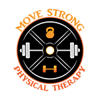Improve Your 1-Arm Rows with This
The 1-Arm Row is great for shoulder health, building upper body strength and to help establish a base of strength for life and sport. It is one of the most common exercises to be performed incorrectly as well.
When working with our athletes and clients inside of Cressey Sports Performance in Hudson, MA, and they are progressing back from a lower or upper body injury, we like to utilize different 1-arm rowing variations to help assist them in getting back to their respective sport, but also to help keep them resilient for life.
For today’s post, we are going to discuss different mistakes that we see when performing a 1-arm row and how to fix them.
#1. No Shoulder Blade Movement
When performing a 1-arm row, we will see the bending and straightening of the elbow to perform the movement, as shown here:
As you can see, there is very little to no movement of the shoulder blade on the ribcage. The athlete is just performing the movement by bending and straightening the elbow. This will have very little carryover to help building strength for the musculature of the shoulder and upper back.
Instead, we will either take a video of how the athlete is performing the movement and show them what we don’t want them to do and then what we DO want them to do OR, we will demonstrate what they are doing and what they should be doing.
The 1-arm row should look like this with movement of the shoulder blade on the ribcage:
Key Points:
Shoulder blade is moving on the ribcage as the athlete pulls the weight towards them and as they bring their arm back to the starting position.
Make sure the athlete is squeezing their shoulder blade into their back pocket as well as letting it move forward as well.
2. Lat Dominant Row
Another miscue that we will commonly see is when the arm is too close to the body.
This can sometimes be a technical miscue OR a compensation by the client to perform the movement. If it is a miscue, we will typically instruct the client to “imagine they are trying to hold a tennis ball in their armpit. Don’t crush the tennis ball, but don’t let it fall out.”
By providing this cue, this will typically help someone bring the arm away from their body and be in a better position as shown here:
If someone brings their arm away from their body and can’t perform the movement, there could be some underlying weakness potentially due to a previous injury or surgery that is limiting them. Try lowering the weight and performing with a lighter weight. If still unable, seek out a licensed medical provider.
If the movement is more challenging when the arm is away from the body vs against the body, this is typically a compensation and the person is utilizing their Latissimus Dorsi to compensate to perform the movement vs the upper back musculature.
Latissimus Dorsi

Upper Back Musculature

Those are two of the most common technique breakdowns that we will see when an athlete performs a 1-arm row. When performing 1-arm rows, make sure to:
Allow for Shoulder Blade Movement on the Ribcage
Bring the Elbow Away from the Body at a Slight Angle
If you are dealing with shoulder or any type of muscle or joint issues and they are keeping you from getting back to doing the things you love, we are here to help. Take that first step HERE.
Tags:

May 19, 2020


